Foundation Year
The English curriculum is built around the three interrelated strands of language, literature and literacy. Teaching and learning programs should balance and integrate all three strands. Together, the three strands focus on developing students' knowledge, understanding and skills in listening, reading, viewing, speaking, writing and creating. Learning in English builds on concepts, skills and processes developed in earlier years, and teachers will develop and strengthen these as needed.
In the Foundation year, students communicate with peers, teachers, known adults and students from other classes.
Students engage with a variety of texts for enjoyment. They listen to, read and view spoken, written and multimodal texts in which the primary purpose is to entertain, as well as some texts designed to inform. These include traditional oral texts, picture books, various types of stories, rhyming verse, poetry, non-fiction, film, multimodal texts and dramatic performances. They participate in shared reading, viewing and storytelling using a range of literary texts, and recognise the entertaining nature of literature.
The range of literary texts for Foundation to Year 10 comprises Australian literature, including the oral narrative traditions of Aboriginal and Torres Strait Islander Peoples, as well as the contemporary literature of these two cultural groups, and classic and contemporary world literature, including texts from and about Asia. Literary texts that support and extend Foundation students as beginner readers include decodable and predictable texts that range from caption books to books with one or more sentences per page. These texts involve straightforward sequences of events and everyday happenings with recognisable, realistic or imaginary characters. Informative texts present a small amount of new content about familiar topics of interest; a small range of language features, including simple and compound sentences; mostly familiar vocabulary, known, high-frequency words and single-syllable words that can be decoded phonically, and illustrations that strongly support the printed text.
Students create a range of imaginative, informative and persuasive texts including pictorial representations, short statements, performances, recounts and poetry.
(source: www.australiancurriculum.edu.au)
Achievement Standard
Receptive modes (listening, reading and viewing)
By the end of the Foundation year, students use predicting and questioning strategies to make meaning from texts. They recall one or two events from texts with familiar topics. They understand that there are different types of texts and that these can have similar characteristics. They identify connections between texts and their personal experience.
They read short, decodable and predictable texts with familiar vocabulary and supportive images, drawing on their developing knowledge of concepts of print, sounds and letters and decoding and self-monitoring strategies. They recognise the letters of the English alphabet, in upper and lower case and know and use the most common sounds represented by most letters. They read high-frequency words and blend sounds orally to read consonant-vowel-consonant words. They use appropriate interaction skills to listen and respond to others in a familiar environment. They listen for rhyme, letter patterns and sounds in words.
Productive modes (speaking, writing and creating)
Students understand that their texts can reflect their own experiences. They identify and describe likes and dislikes about familiar texts, objects, characters and events.
In informal group and whole class settings, students communicate clearly. They retell events and experiences with peers and known adults. They identify and use rhyme, and orally blend and segment sounds in words. When writing, students use familiar words and phrases and images to convey ideas. Their writing shows evidence of letter and sound knowledge, beginning writing behaviours and experimentation with capital letters and full stops. They correctly form known upper- and lower-case letters.
(source: www.australiancurriculum.edu.au)
- Plus Plan
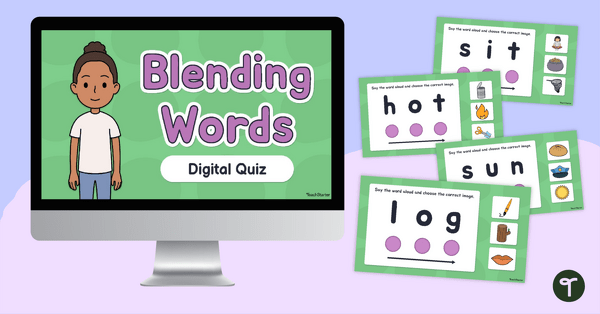
Blending Words Digital Quiz
Get your students to practise their blending with simple CVC words using this digital activity.
- Plus Plan
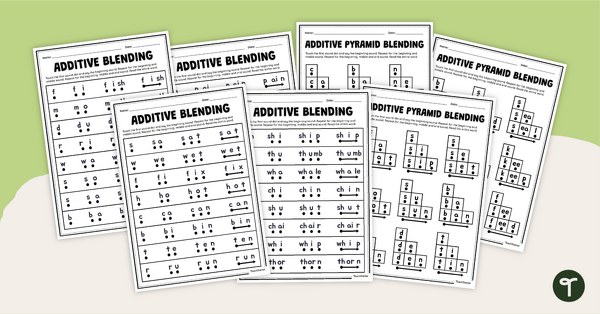
Additive Blending Worksheet Pack
Provide students with the tools to successfully practise phoneme and word blending with these additive and pyramid blending worksheets.
- Plus Plan
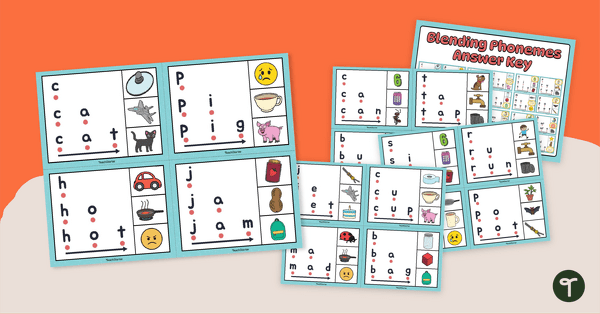
Blending Phonemes Clip Cards
Provide students with the ability to practise successive blending oh phonemes with this set of clip cards.
- Plus Plan
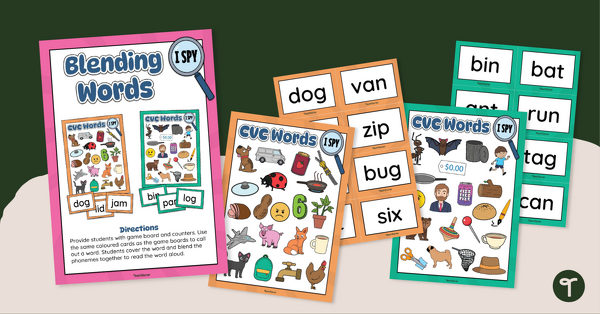
I Spy Blending Phonemes Activity
Support your students' phonemic awareness development with this fun I Spy phoneme blending activity
- Plus Plan

Onset and Rime Short E Interactive
Practise onset and rime words that contain the short E vowel sound with this interactive activity for the early years classroom.
- Plus Plan
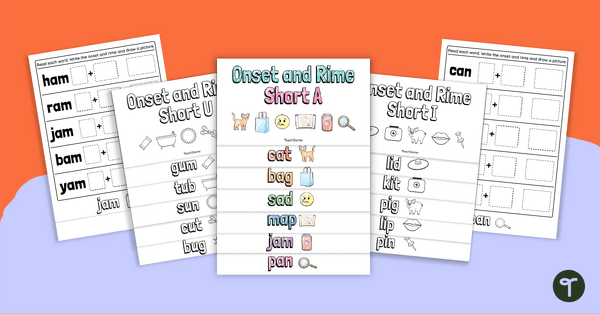
Onset and Rime Flipbooks
Flip through different short vowel onset and rime words with this set of printable flipbooks.
- Plus Plan
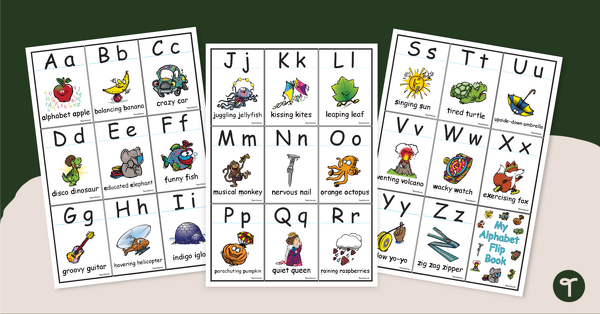
Alphabet Flashcards
Use these alphabet flashcards to help familiarise your students with the letters of the alphabet and their corresponding sounds.
- Plus Plan
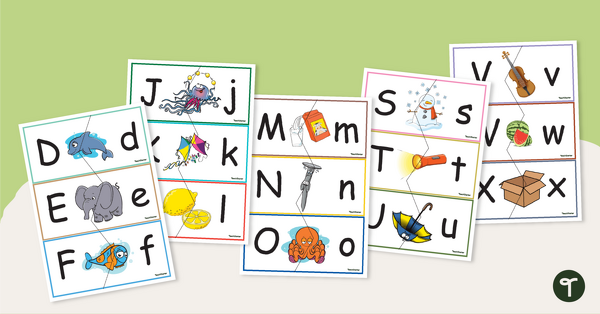
Alphabet Matching Game
Use this alphabet matching game to familiarise your students with the letters of the alphabet and their corresponding sounds.
- Plus Plan
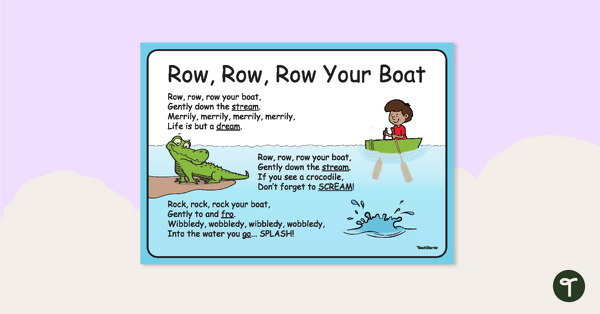
Row Row Row Your Boat – Nursery Rhyme Poster
Use this “Row Row Row Your Boat” nursery rhyme poster to teach your youngest students about rhyme and rhythm.
- Plus Plan
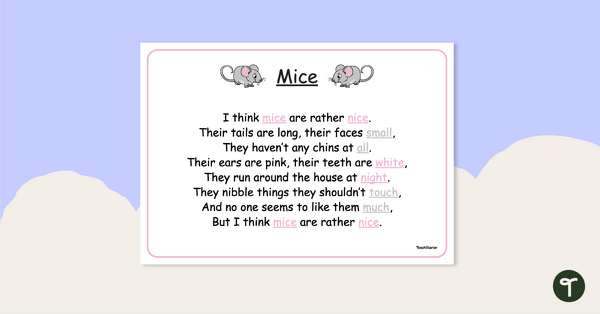
I Think Mice Are Rather Nice – Nursery Rhyme Poster
Use this “I Think Mice Are Rather Nice” nursery rhyme poster to teach your youngest students about rhyme and rhythm.
- Plus Plan
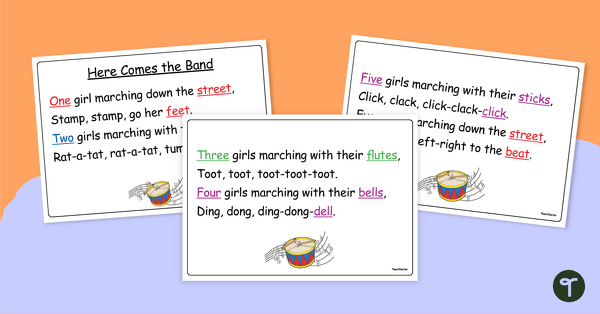
Here Comes the Band – Counting Rhyme Poster
Use the counting nursery rhyme “Here Comes the Band” poster to teach your students about numbers and rhyme simultaneously!
- Plus Plan
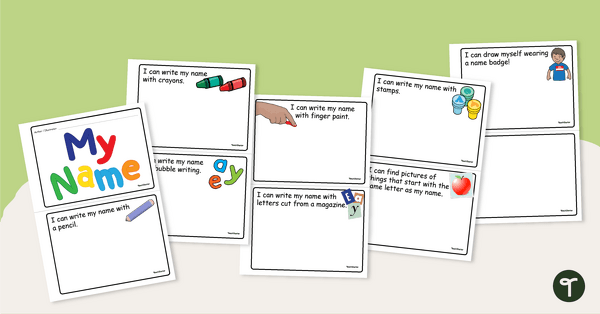
I Can Write My Name! Mini Book
Get your students practising how to write their names with this fun-sized mini book perfect for early years students.
- Plus Plan

Onset and Rime Cut and Paste Worksheet Pack
Practise matching different onset and rime words with this set of cut and paste worksheets.
- Plus Plan
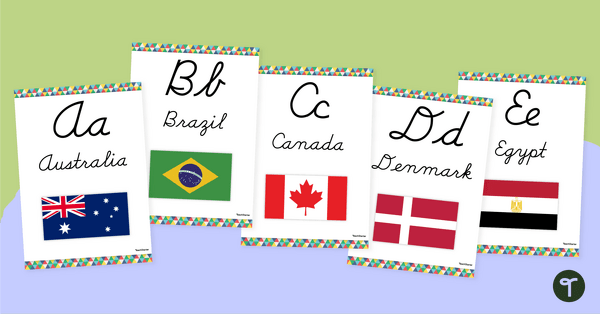
Flags of the World - Print and Cursive Alphabet Line
Display the alphabet in print or cursive with a unique Flags of the World Alphabet Line.
- Plus Plan
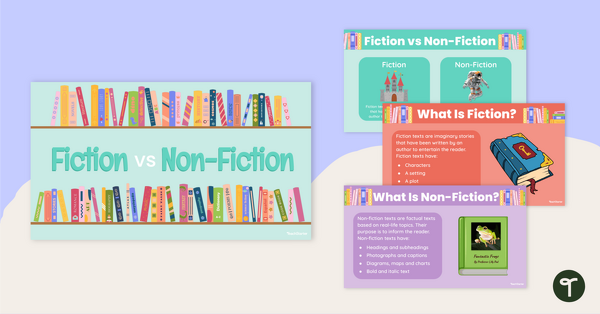
Fiction vs Non-Fiction Teaching Slides
Teach your students the difference between fiction and non-fiction books with this age-appropriate teaching presentation for early years literacy lessons.
- Plus Plan
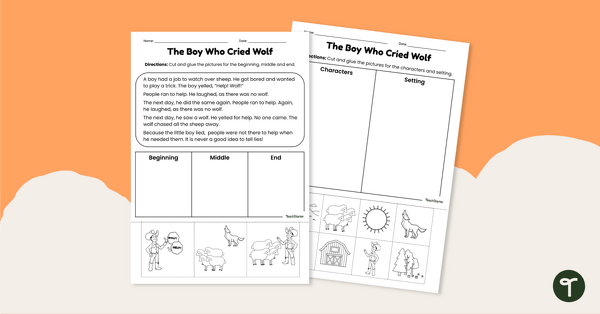
Story Elements Cut and Paste Worksheets – The Boy Who Cried Wolf
Explore story characters, settings and main events with this set of cut-and-paste worksheets based on a well-known fable.
- Plus Plan
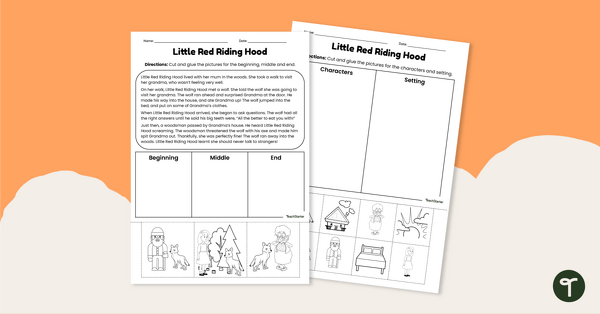
Story Elements Cut and Paste Worksheets – Little Red Riding Hood
Explore story characters, settings and main events with this set of cut-and-paste worksheets based on a well-known fairy tale.
- Plus Plan
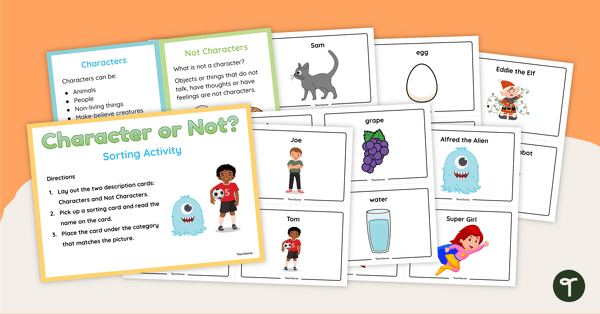
Character or Not? - Sorting Activity
Explore the difference between characters and non-characters with this hands-on sorting activity.
- Plus Plan
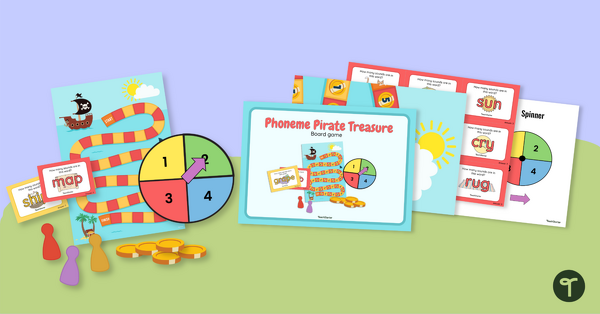
Counting Phonemes Game - Pirate Treasure
Practise counting how many phonemes are in words in this pirate-themed treasure hunt game.
- Plus Plan
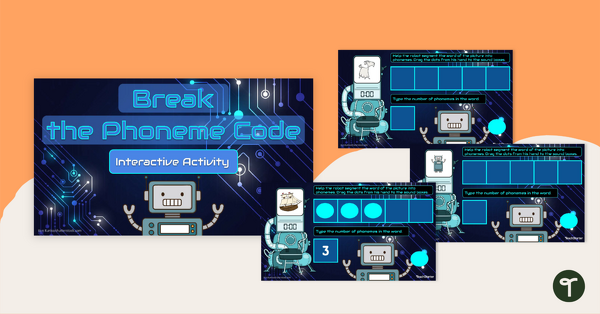
Break the Phoneme Code - Interactive Activity
Practise breaking words into their phonemes with this fun robot-themed interactive activity.
- Plus Plan

Stomp the Sounds - Phoneme Segmentation Activity
Stomp the sounds in words with this multi-sensory phoneme segmentation activity.
- Plus Plan
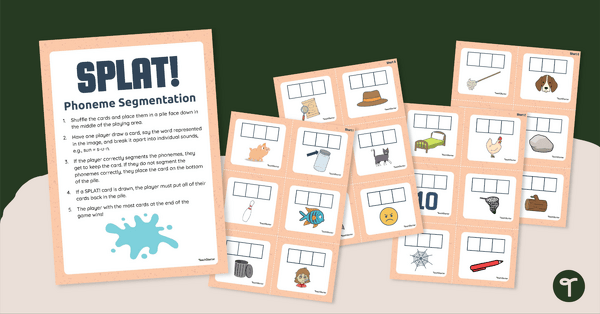
SPLAT! Phoneme Segmentation Game
Practise segmenting one-syllable words into their phonemes with this fun game!
- Plus Plan
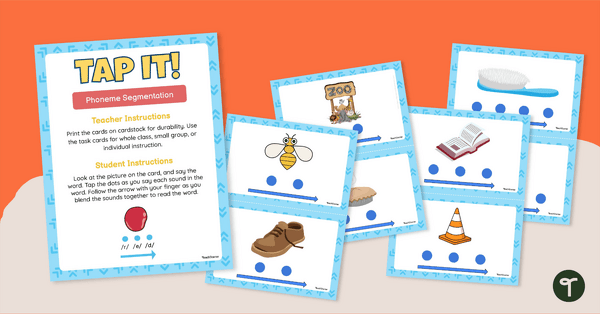
TAP IT! Phoneme Segmentation Mats
Break down words into either 2, 3, or 4 phonemes with this set of 18 picture cards.
- Plus Plan
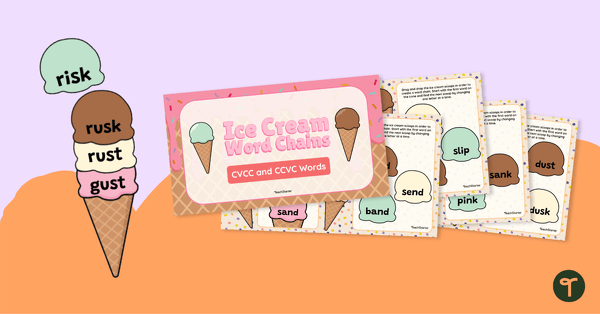
Ice Cream Word Chains - Interactive Activity
Drag and drop the ice cream scoops to make CVCC and CCVC word chains with this engaging digital activity.
- Plus Plan
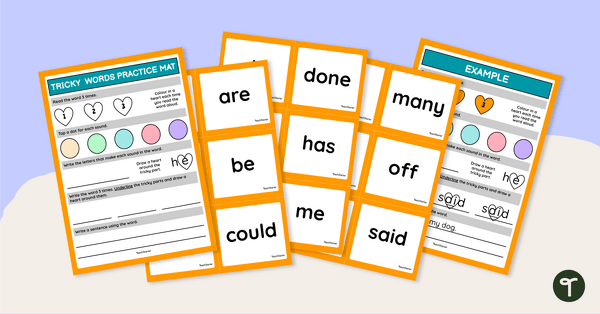
Tricky Word Flashcards and Practice Mat
Practise identifying the tricky parts in high-frequency words with this practice work mat and accompanying tricky word cards.
- Plus Plan
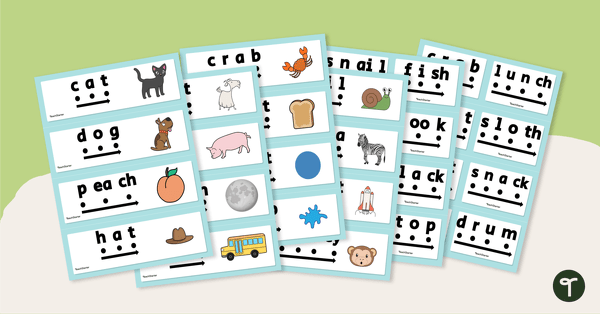
Blending Phonemes Fluency Strips
Develop students’ ability to blend phonemes in common words with this comprehensive set of phoneme blending fluency strips.
- Plus Plan
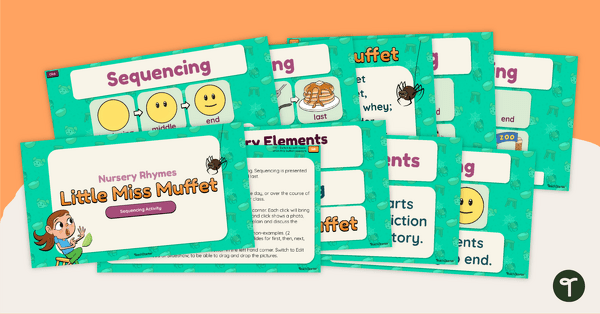
Narrative Sequencing Teaching Presentation - Little Miss Muffet
Engage young readers in texts and learn about narrative sequencing with a teaching presentation featuring the Little Miss Muffet nursery rhyme.
- Plus Plan
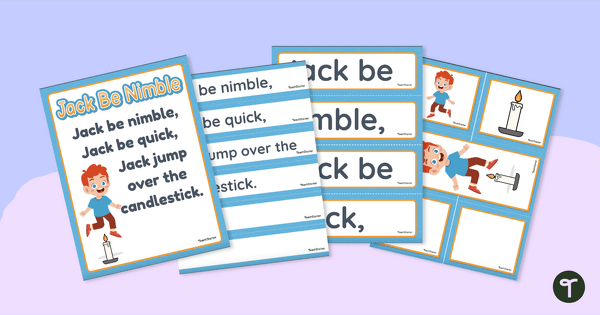
Jack Be Nimble - Sequencing Cards
Read and retell the story within the Jack Be Nimble tale with a set of retelling sequencing cards.
- Plus Plan
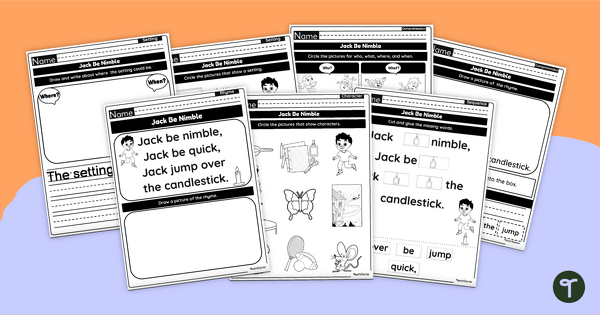
Jack Be Nimble Worksheets
Identify characters, settings and parts of a story with early years reading worksheets featuring the Jack Be Nimble nursery rhyme.
- Plus Plan
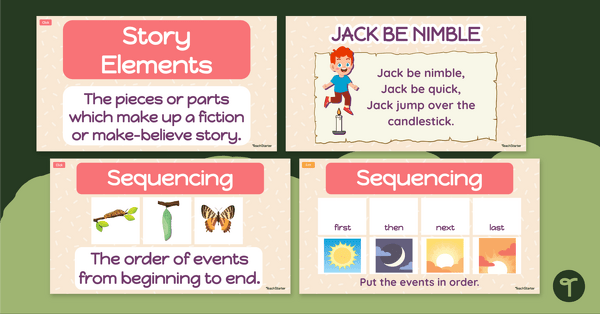
Narrative Sequencing Teaching Presentation - Jack Be Nimble
Engage young readers in texts and learn about narrative sequencing with an instructional slide deck featuring the Jack Be Nimble nursery rhyme.
- Plus Plan
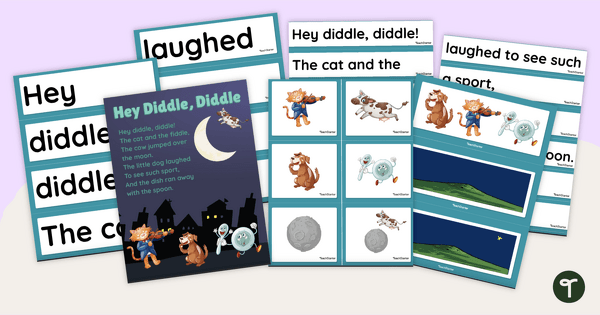
Hey Diddle Diddle Sequencing Activity Cards
Read and retell the story within the Hey Diddle Diddle tale with a set of retelling sequencing cards.
- Plus Plan
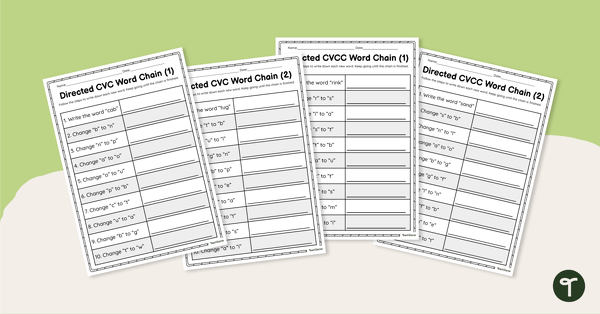
Directed Word Chains - Worksheets
Manipulate the individual phonemes in words to create new ones with this set of four word chain worksheets.